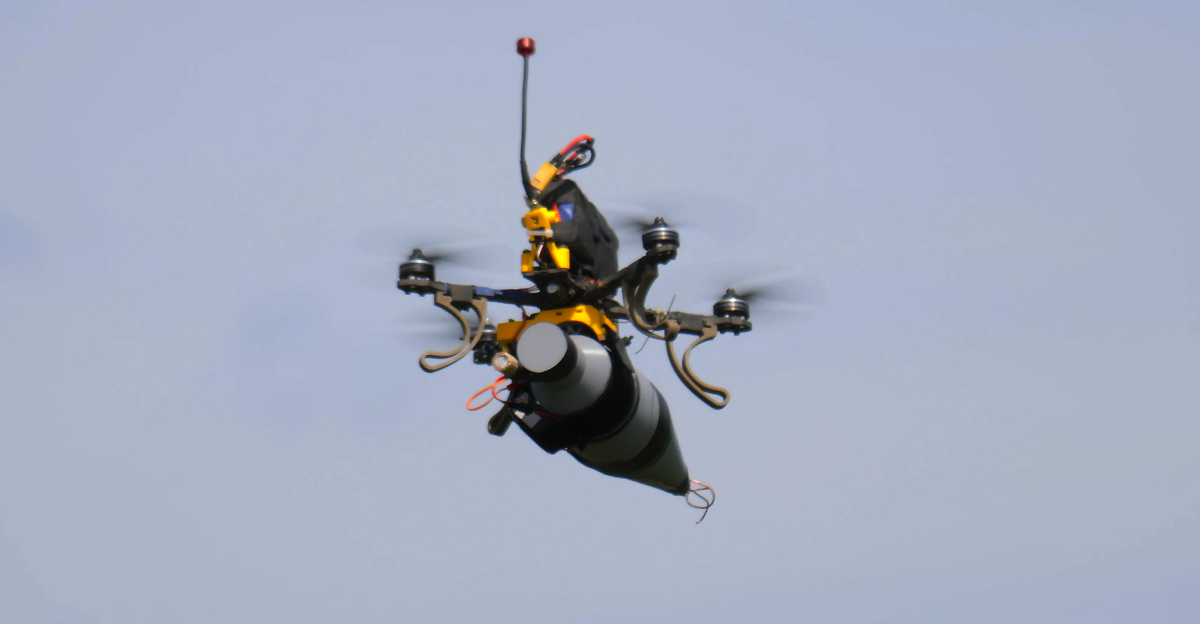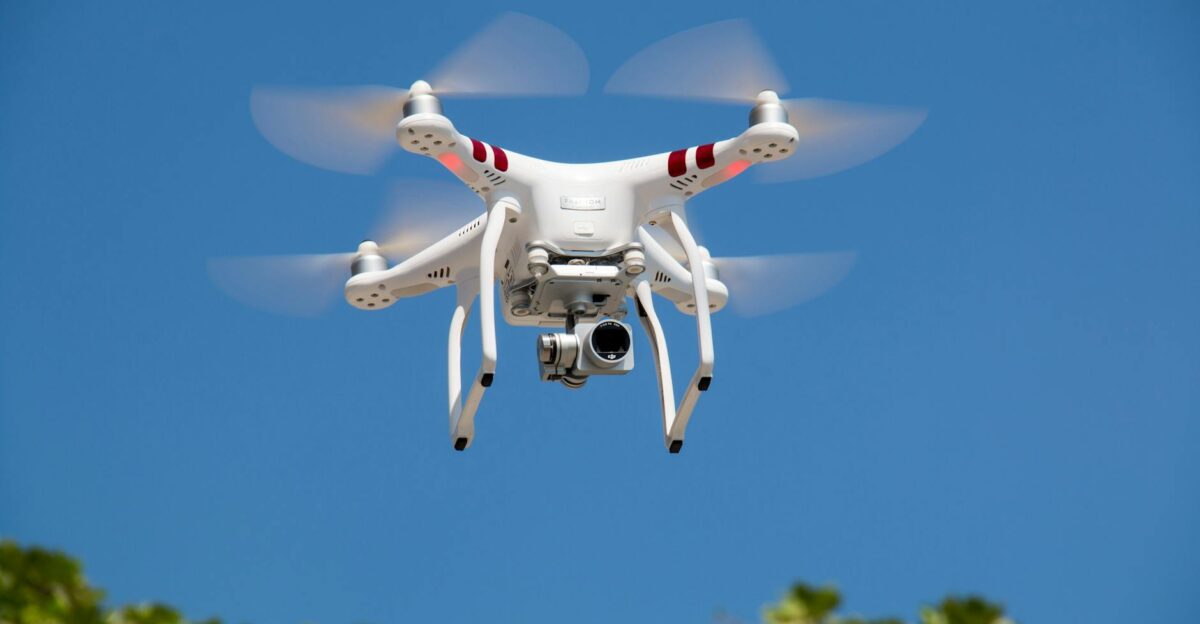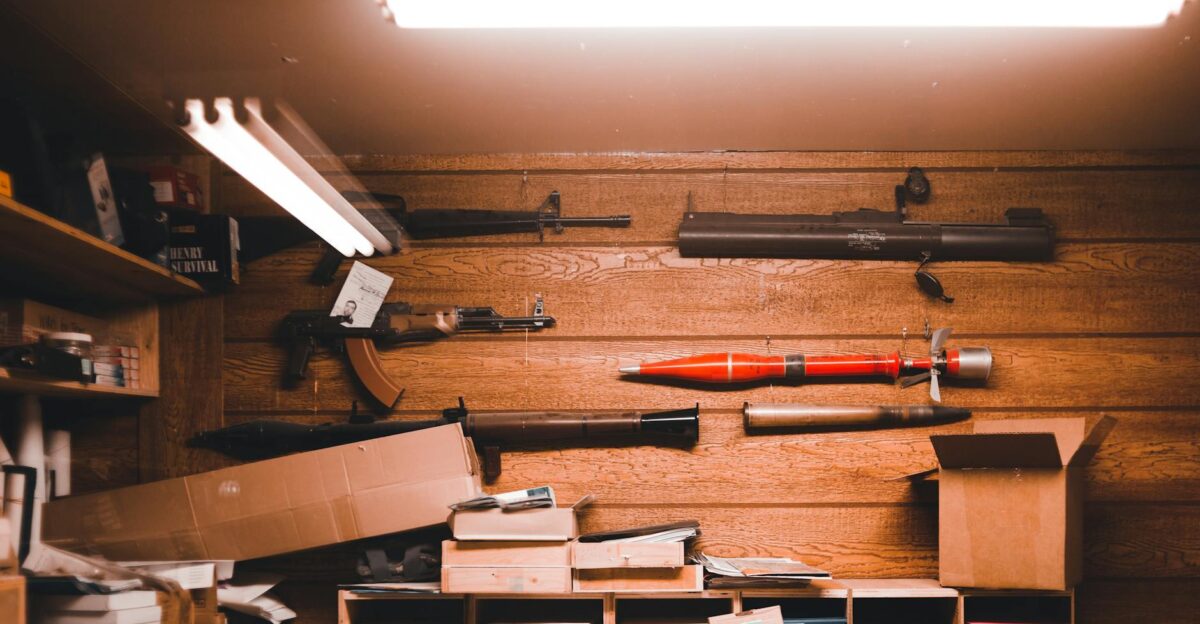
A single cheap drone can be manufactured for the price of a nice dinner out for two. This figure is a minuscule amount when it comes to traditional weapon systems and has changed the nature of the Ukraine-Russian conflict.
Russia knows the damage that these drones can do all too well, after a targeted strike destroyed enough ammunition to reduce the country’s firepower for months, demonstrating how hundreds of dollars can neutralize millions in military assets.
The Cost Factor Of Drones

Ukraine is leveraging first-person view drones, originally racing quadcopters, that now cost approximately $400 and have been adapted to carry a devastating payload.
The drones stream live video directly to operators positioned safely kilometers away, enabling precision strikes against armored vehicles worth millions. Ukraine has ramped up production, manufacturing over 200,000 units monthly, with some estimates suggesting the country can produce four million drones annually. When these drones are directed at key military assets, their deadly efficiency proves itself.
Russia’s Arsenal

Russia’s 107th GRAU arsenal in Toropets was renovated in 2018 in an effort to make it more resilient against nuclear attacks. This key facility stores 30,000 tons of advanced munitions across five square kilometers. Iskander tactical missiles, S-300 air defense systems, guided bombs, and North Korean KN-23 ballistic missiles were some of the munitions that the facility stored.
Former Russian Deputy Defense Minister Dmitry Bulgakov had boasted that the depot met “highest international standards” and could defend against missiles and even small nuclear strikes.
One Of The Most Secure Facilities

Located 470 kilometers from Ukraine’s border and 240 miles west of Moscow, the facility in Toropets represented one of Russia’s most secure ammunition storage facilities.
The depot played an integral role in supplying Russian forces across multiple fronts, including troops in Kursk, Belgorod, and Bryansk regions. However, the versatility of the facility would be no match for $400 drones sent in overwhelming numbers.
The Strike

While many residents of the region were still asleep in their beds on September 18, 2024, Ukrainian Security Service, Military Intelligence, and Special Operations Forces launched coordinated drone swarms against the Toropets facility. The strike occurred at At 3:56 AM.
An SBU source reports that the operation completely destroyed a large warehouse of the main missile and artillery department. The sheer volume of FPV drones overwhelmed the depot’s defenses, with at least one diving directly into exposed ordnance stacks. The explosions from the drones and the facility being hit caused considerable seismic activity.
Seismic Repercussions

The explosion small seismic waves that registered a 2.5-2.8 magnitude earthquake, with NASA satellites detecting intense heat sources across 13 square kilometers. Explosions from detonating munitions continued for hours after the initial strike. Over 3,000 residents fled the area and sought shelter.
Mikhail K., a Toropets resident and former Russian army serviceman gave his account of the catastrophic even, “Up to six drones attacked the depot as far as I know. One air defence unit continued to fire into the air even after several drones had hit their targets. Ammunition began to detonate and a major fire started. That was evident from the tracers in the sky.
The Human Toll

The explosion had far-reaching consequences, with debris from detonating munitions threatening nearby villages. Governor Igor Rudenya ordered partial evacuations, and 13 people ended up hospitalized from the blast. One chat user begged for help just after the attack took place, “Please evacuate people from the village of Tsikarevo. They are on the shore of Lake Kudinskoye and can only be reached by water. For God’s sake, help them! There is nothing left of the village.”
Pro-Russian blogger Anastasia Kashevarova claimed hundreds may have died, including 200 personnel in the facility’s utility block alone. Russian authorities initially blamed “falling drone debris” for the fires, refusing to acknowledge the successful Ukrainian strike. The destruction of the facility has substantial implications for Russian operations.
Consequences

In the aftermath of the drone attack, Colonel Ants Kiviselg of Estonian Defense Forces Intelligence calculated that Russia loses 10,000 shells weekly in average combat, making this strike equivalent to a two-to-three-month ammunition supply.
The depot’s destruction should affect Russian operations for weeks, forcing Moscow to redistribute ammunition from other facilities. This is just one of several targeted drone strikes to prove how cost-effective and efficient the technology has become. The destruction of the depot itself and the stockpile inside were valued at at least $40 million.
The Evolution Of Drone Warfare

Ukraine’s asymmetric drone strategy has changed modern warfare. FPV units now account for 60-70% of battlefield damage to Russian equipment.
Because of their $400 price tags, they can destroy Russian equipment worth five times that, such as tanks worth $2 million. “This is what modern asymmetric warfare looks like—hundreds of dollars versus tens of millions,” an SBU officer told The Kyiv Independent.






